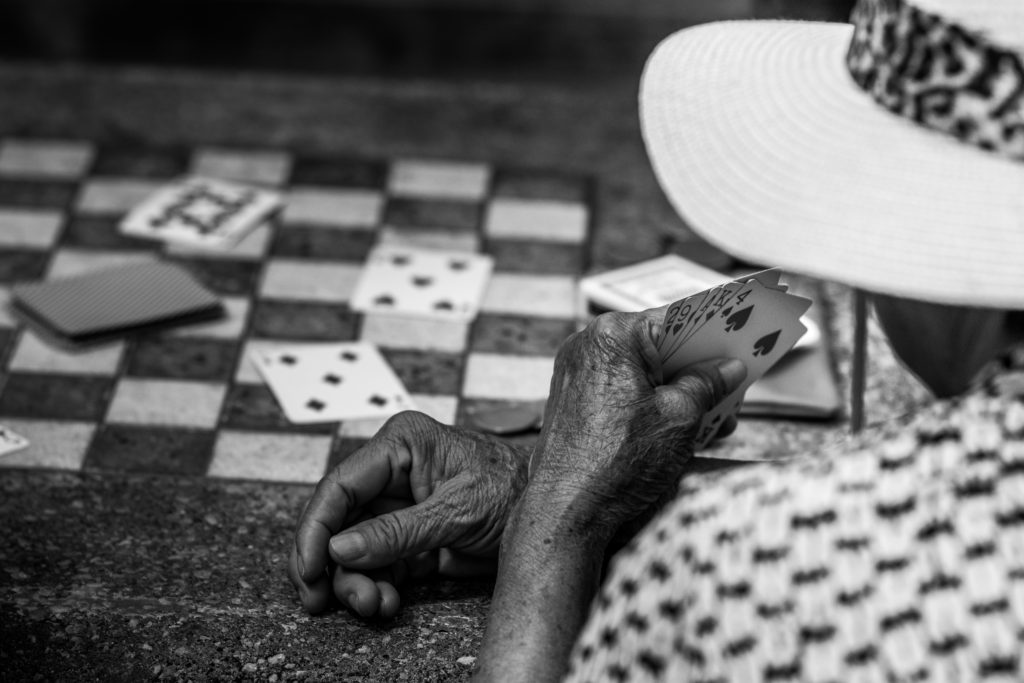
Is it the left hand?
Is it the finger angle?
Is it the ability to adjust up or down on the fly?
Is it the tone from the bow making the pitch fuzzy?
It is all of these things.
But intonation solutions all start in the same place: Listening.

Is it the left hand?
Is it the finger angle?
Is it the ability to adjust up or down on the fly?
Is it the tone from the bow making the pitch fuzzy?
It is all of these things.
But intonation solutions all start in the same place: Listening.

Roughly six weeks into working together your student’s excitement for violin lessons vanish.
Violin is no longer shiny and new.
They understand what the pattern of each lesson and practice is.
The work is becoming challenging.
This is where parents often hit a wall.
The Suzuki Philosophy is built on the belief that children who are motivated by their environment to play violin will love practicing violin. We spend so much time and effort setting up an environment which encourages music making — playing the recording, establishing a practice spot and time, attending concerts, observing other lessons and group classes — that we (parents and teachers) can be flummoxed when a student flat out says no, they don’t want to do something.
When this happens, and it inevitably will, please remember the following. [Read more…]

The first few moments with a student at the beginning of the lesson set the tone for your time together.
It’s easy for this time to be a chaotic transition between two families, but it doesn’t have to be. Instead of leaning out of mindful, attentive teaching, this is the moment to lean in.
How do you give yourself space to recharge while also staying attentive? Turn these mindful moments into a routine– a series of habits. These moments can be like a baseball player’s routine as they wind up at the plate before an important pitch, or a special dribble routine and ready-set of a basketball player moments before her game-winning free throw.
Here are a few routines you could establish.
I know it sounds silly, or perhaps cold, but making the only goodbye from you really special and staying quiet really cuts down on chatter. There is no need to fluff the goodbye if you deliver a sincere bow and a ‘see you next time.’ On the other hand, not returning a ‘good bye,’ ‘see you this weekend,’ ‘have a good one’ when offered is an excellent opportunity to put some distance between cultural norms and your intention.
I picked this one up from Ed Kreitman. He says it allows him to flush away the energy (and the germs) from one lesson to the next. This keeps the teaching room– and the teacher– from getting stale. I love doing this because it allows me to exit while the student is packing up, which can be a sloppy time if the student and parent are tired and/or rushed. I also use the time to ground myself in sensory experience. Standing up, walking down the hallway, hearing new sounds, smelling new smells. I really feel the water on my hands, the temperature, the texture, the flow rate. When I return back to my teaching chair I am more alive.
As the next student walks in, I urge you to just sit in your chair rather than fill the gap with books, articles, frantic note taking, or phone checking. These quick inputs leave cognitive residue for up to 17 minutes– over half of your 30 minute lesson! Straighten your back, put both feet on the floor, re-discover your breath, and allow the mind to empty. Even if the only time you have is while the next student is entering an unpacking, just sit there. Fill up the room with your calm, quiet, kind energy. The more moments you have to do this, the more welcoming the energy for the student.
What an amazing opportunity we have to request silence from our students and their families–the perfect excuse! We need a quiet environment for tuning–and we want a quiet energy from them– so ask for it. Establish from the very first lesson that while an instrument is being tuned everyone is quiet: student, parent, teacher, siblings, observers. Before students even have a real violin to tune cultivate this habit by tuning your own violin at the beginning of every lesson. Once you are tuning their violin you can ask them to ‘help’ you by putting their hand on the scroll to feel the vibrations and look at the wiggling string. This engages their eyes, ears, and body in a little envelope of silence, a beautiful mindful moment. Make sure to take your time to tune yours and their violin perfectly. Never rush. Their patience is activated in these critical intervals.
I tell students this is my absolute favorite part of the lesson. And it’s true. In rest position students gaze up at me while I, also in standing rest position, make direct eye contact with them. We count together to 10, occasionally to a lower number if the student is still developing their patient focus. If the student breaks eye contact or moves their body and I just stop counting. Once they return I start counting again. When we reach 10 we bow to each other. I don’t say anything, I just pour my reverence and gratitude for the child into this gesture of humility.
With these routines in place, we are ready to begin working together. Because I go through this routine with most students every week, we are able to do it together without speaking. I also don’t need to exert any effort into the process, just presence and an ‘allowing’ energy.
If you are looking for a way to bring more mindfulness or calmness into your lessons, the very beginning is the best place to start.

**From FOCUS GAMES, a series of games I’ve developed to teach ‘focus’ to my beginning students (link)**
This game is designed to develop awareness, not attention. For an explanation of the distinction between the two see the post linked above. With awareness the goal is to enter through the back door of the student’s consciousness. You want them to strengthen their muscle of broadening a field of input, without focusing on anything in particular.
Some first-steps for doing this are to play I-Spy or I-Listen or I-Feel games. The teacher asks, “I Spy something green, can you find it?” Or “I hear something loud/soft/high/low, can you hear it?”
I like to play this game as a next step.
Index cards and a marker (for game extension)
Student sits criss cross on their foot chart facing away from the teacher.
They sing Twinkle or hum any Suzuki tune
The teacher slowly brings an unmarked index card from behind them into their peripheral visual field. It could be to the right, left, above the student.
As soon as the student sees the card, they point to it with their hands without stopping their signing/humming. [Read more…]

**From FOCUS GAMES, a series of games I’ve developed to teach ‘focus’ to my beginning students (link)**
I don’t think I’m very good, yet, at naming games. But this one was designed for seeing, seeing five specific objects.
5 smallish but distinctive objects. It could be anything, but I use a small plastic dinosaur, a pink paper clip, a penny, a polished stone, and a green frog.
Student sits, legs crossed, on their foot chart.
Teacher places five objects around the room in plain sight, but variable distances away from the student. I try to keep the objects within their visual field (including peripheral vision) while sitting still, so they aren’t tempted to twist. Keep it a looking game–not a moving game.
Student must stay on their foot chart, and just move their head and eyes.
Teacher calls name of different objects, student turns their head to look at the object. [Read more…]

**From FOCUS GAMES, a series of games I’ve developed to teach ‘focus’ to my beginning students (link)**
This is one of my favorite games, and I love to play it with group classes! It cultivates active, attentive listening. Finding a beautiful bell with a distinctive ring elevates the game to a very special experience. I typically borrow one of the ones from our zen meditation halls.
A bell.
Students may sit or stand. This is a great floor/break/low energy activity.
Show students the bell (looking) and what it sounds like (listening), so they know what to expect.
Ask them to close their eyes. Students must keep eyes closed until the bell STOPS ringing.
While their eyes are already closed teacher rings the bell and after a few minutes dampens it abruptly.
Students fling their eyes open. [Read more…]

**From FOCUS GAMES, a series of games I’ve developed to teach ‘focus’ to my beginning students (link)**
I wanted to help a young four year old with her attention and awareness. I could see she had a natural inclination toward feeling in general, but her sense of touch and ability to communicate about touch were still rudimentary. We started to play a simple version of the following game.
At least two small objects which lay flat. I have 5 plastic lady bugs (hence the name). You could use any distinctive, flat object.
Ask student to lie down flat on their backs and close their eyes*.
Place a lady bug somewhere on their body and ask, “Where did the lady bug land?”
They should be able to tell you which body part it was– leg, arm, hand, head, elbow, etc.
Repeat on many different body parts.
I typically end with the lady bug on the belly.
While laying down, the breath is pronounced so I instruct the student to FEEL how far the lady bug is traveling up and down in the air. [Read more…]

I hear parents say it often: “It’s time to focus now!”
Rarely does it seem students know what ‘focusing’ is. Do parents know what focusing is? Do you know what focusing is?
I’m not sure.
I think what we want is for students to engage their full attention and awareness.
To not lose a connection with their body.
To maintain a connection with their aural environment.
To both see the whole picture and direct attention to the tiny details.
At any given moment two ‘things’ are happening simultaneously:
We are doing a thing, and
We know we are doing that thing
For example, we are sitting in our chair and we are aware of the fact that we are sitting in our chair. If we are daydreaming about future career endeavors we are no longer aware of sitting in our chair. Where we are and what we are aware of have diverged, which, as a resting state, is quite an uncomfortable one. This is why waking life is anxiety-inducing for most.
If we want our students to be confident and present in this moment, we must train them to not just do things, but ‘know’ they are doing things. That knowing is made up of two parts, attention and awareness. [Read more…]

And I don’t just mean play one review piece as prep for a new piece, but center the bulk of your lesson around review.
This is magic. This is elegant. This will transform your teaching life.
Most teachers I know spend the majority of their lessons teaching students notes. This is about as absurd as a chef helping a cooking student pull out all of their ingredients from the cooler and then sending them home.
Good teachers use the lesson as an opportunity to develop a student’s playing with the notes they already know.
Good teachers will still usually do this on newly learned repertoire, but master teachers will do this on review repertoire. [Read more…]

You might be asked to step in to lead a group class at the last minute.
Not only do you not know the level and needs of the students in the class, but you don’t have much time to plan. You need a class like this in your back pocket.
Below I present a three activity group class which is almost always fun and engaging for students regardless of their age, level, or energy.
The excitingness of the activities stem from their open ended nature. The activities present challenges which are easy to navigate at some level, but then you as a teacher can ratchet up the difficulty to a extreme level based on the group in front of you.
The activities could also go on forever. You can move from one activity to the next based on the energy of the group. If you and students keep coming up with clever ways to continue the delight of the challenge, then go with it. If their interest is waning, it’s time to move on. If you run out of time (which I rarely do) circle back to one of the other two activities.
The Plan…
As soon as everyone is tuned an in lines, I slowly look over the whole class making eye contact with the students who are paying attention. Without saying a word I put my violin into play position and launch into the intro of Twinkle Var. A. We all play it together — those who weren’t paying attention get with it pretty quickly. [Read more…]
